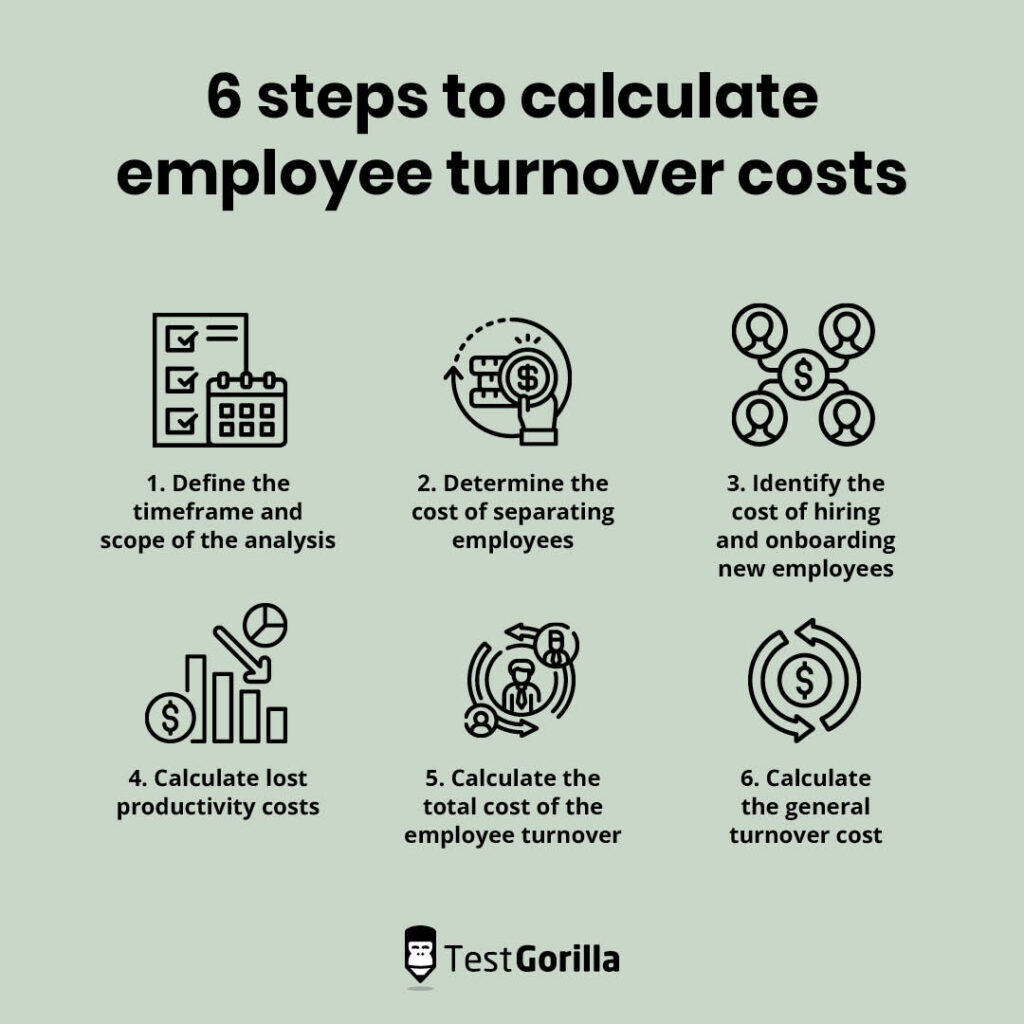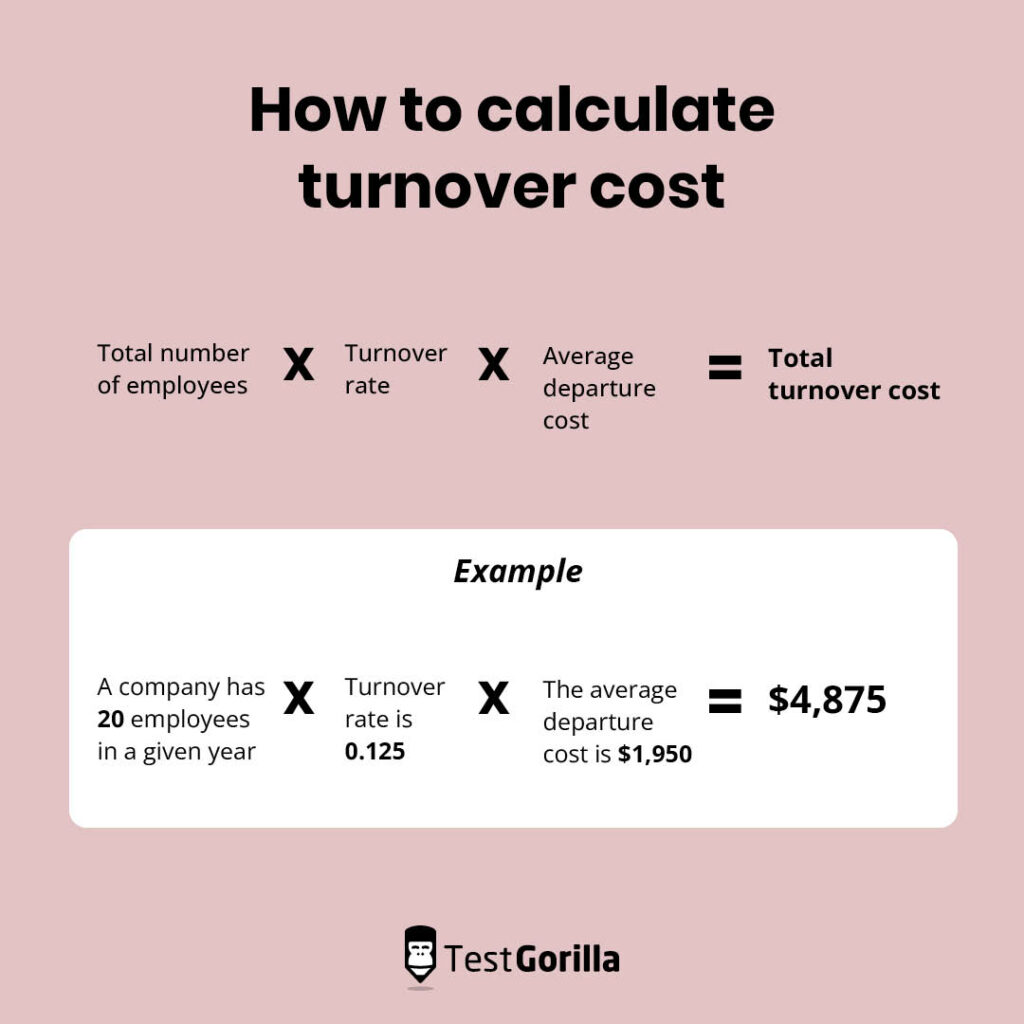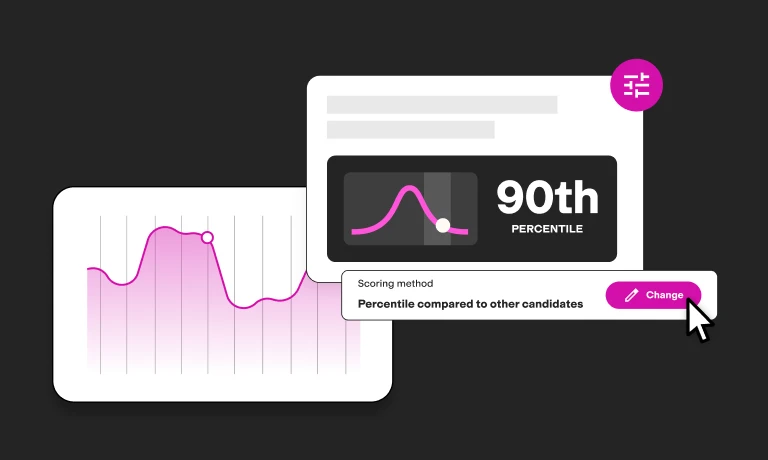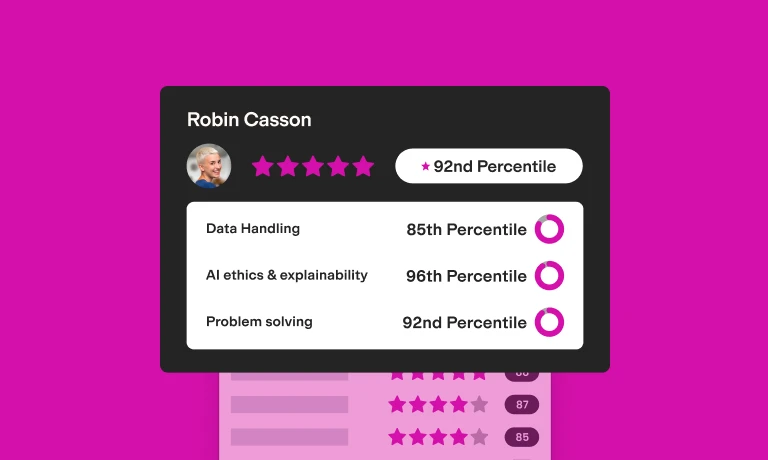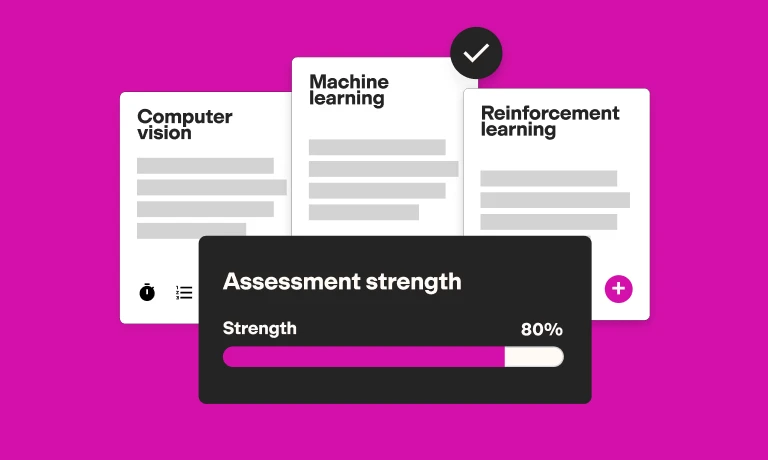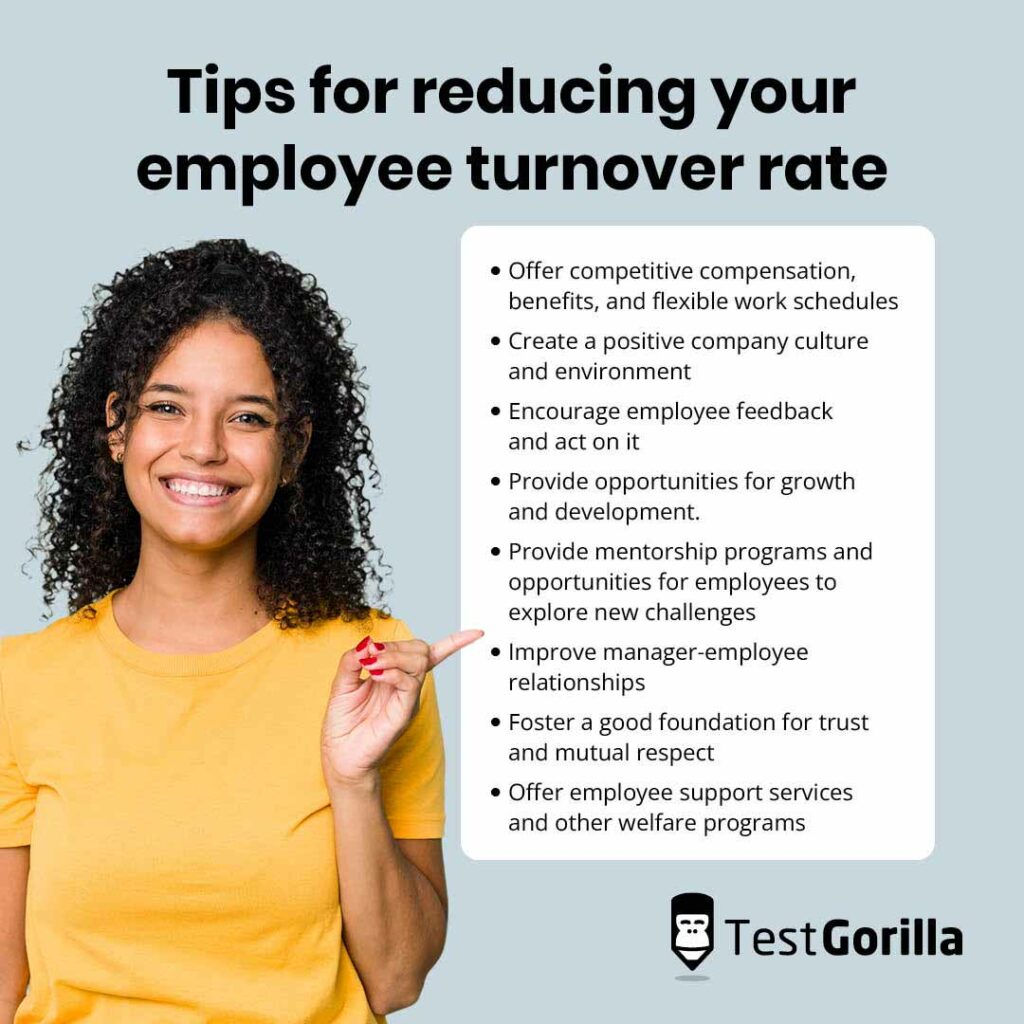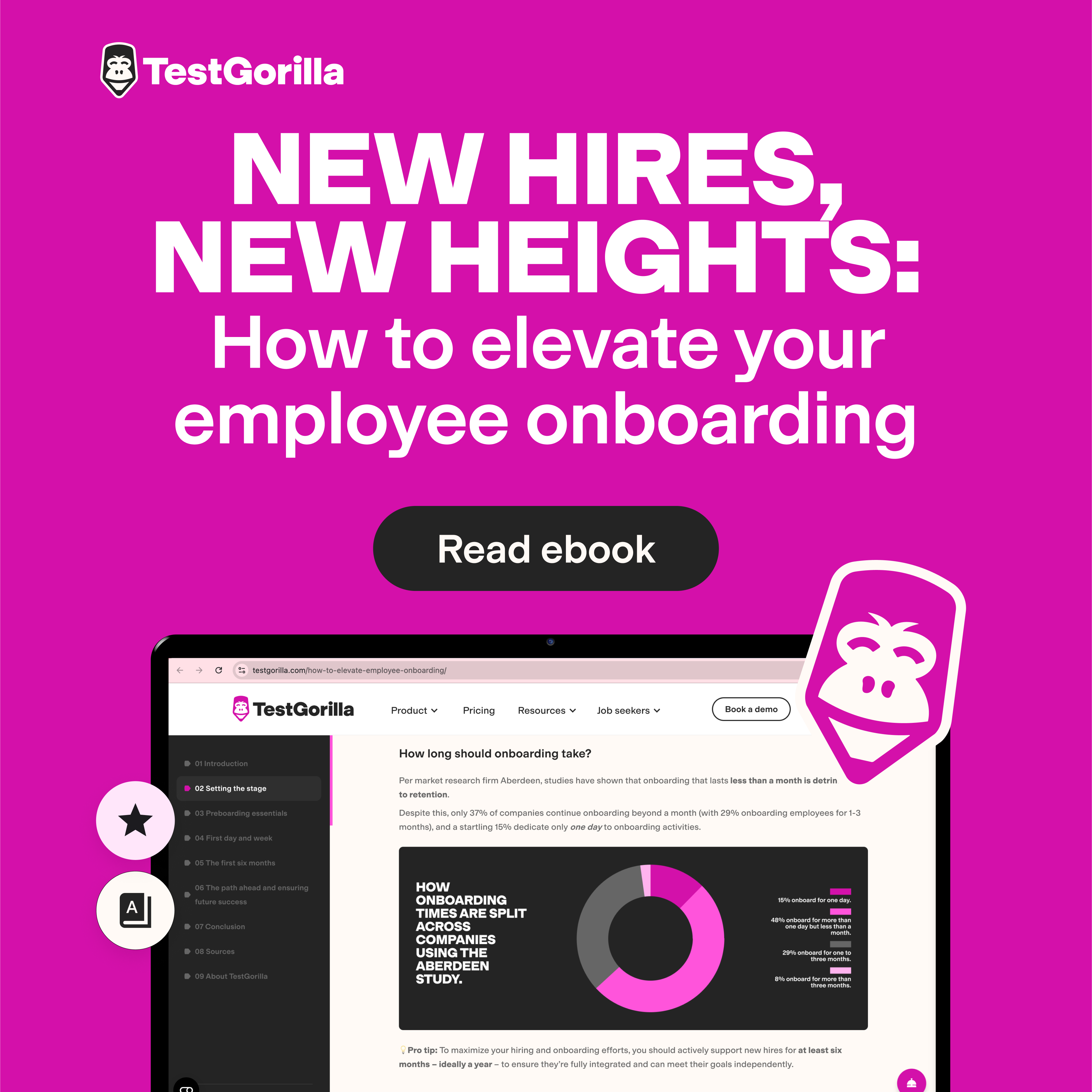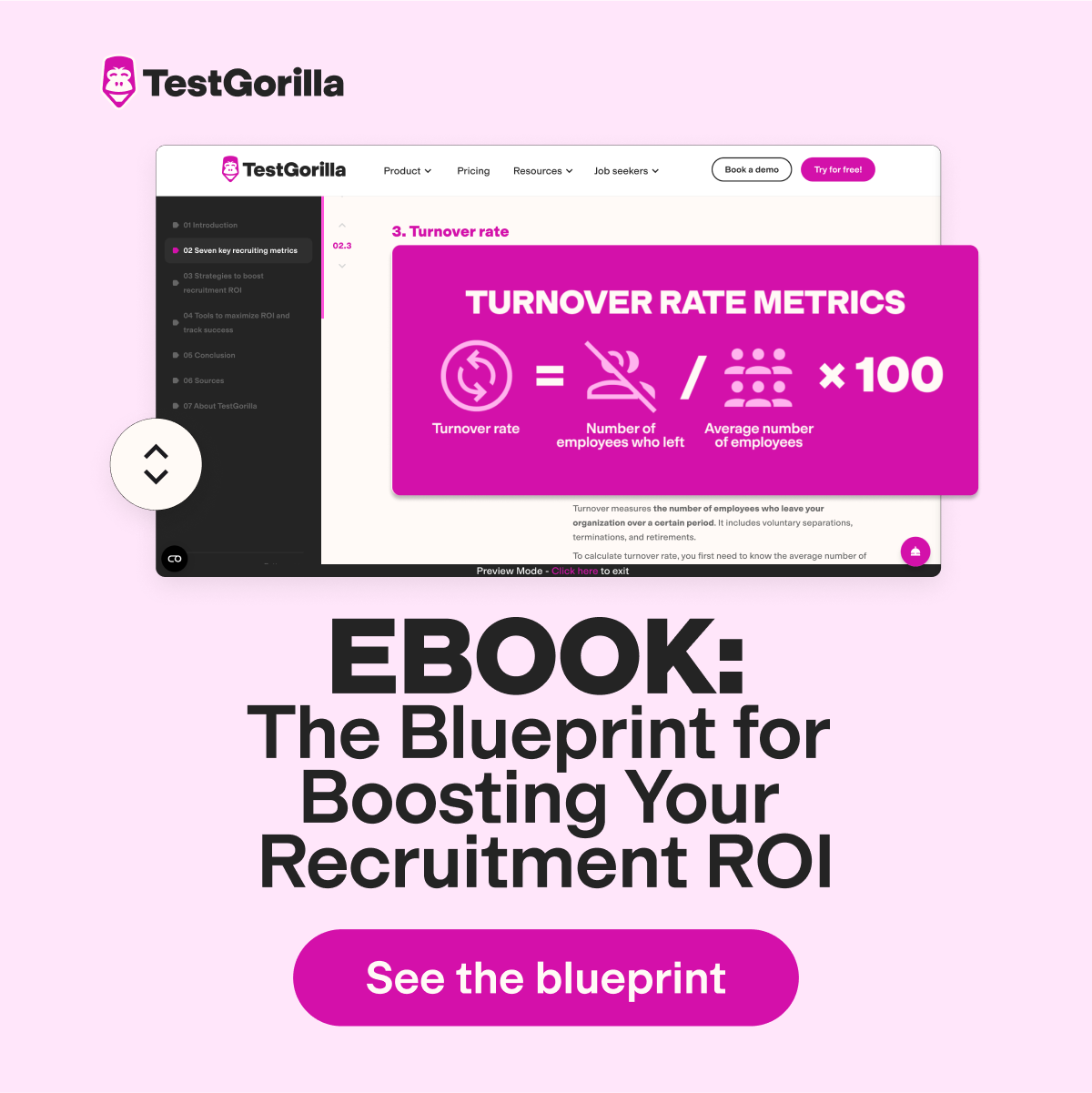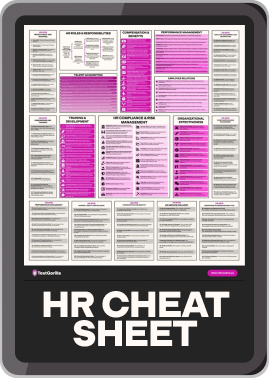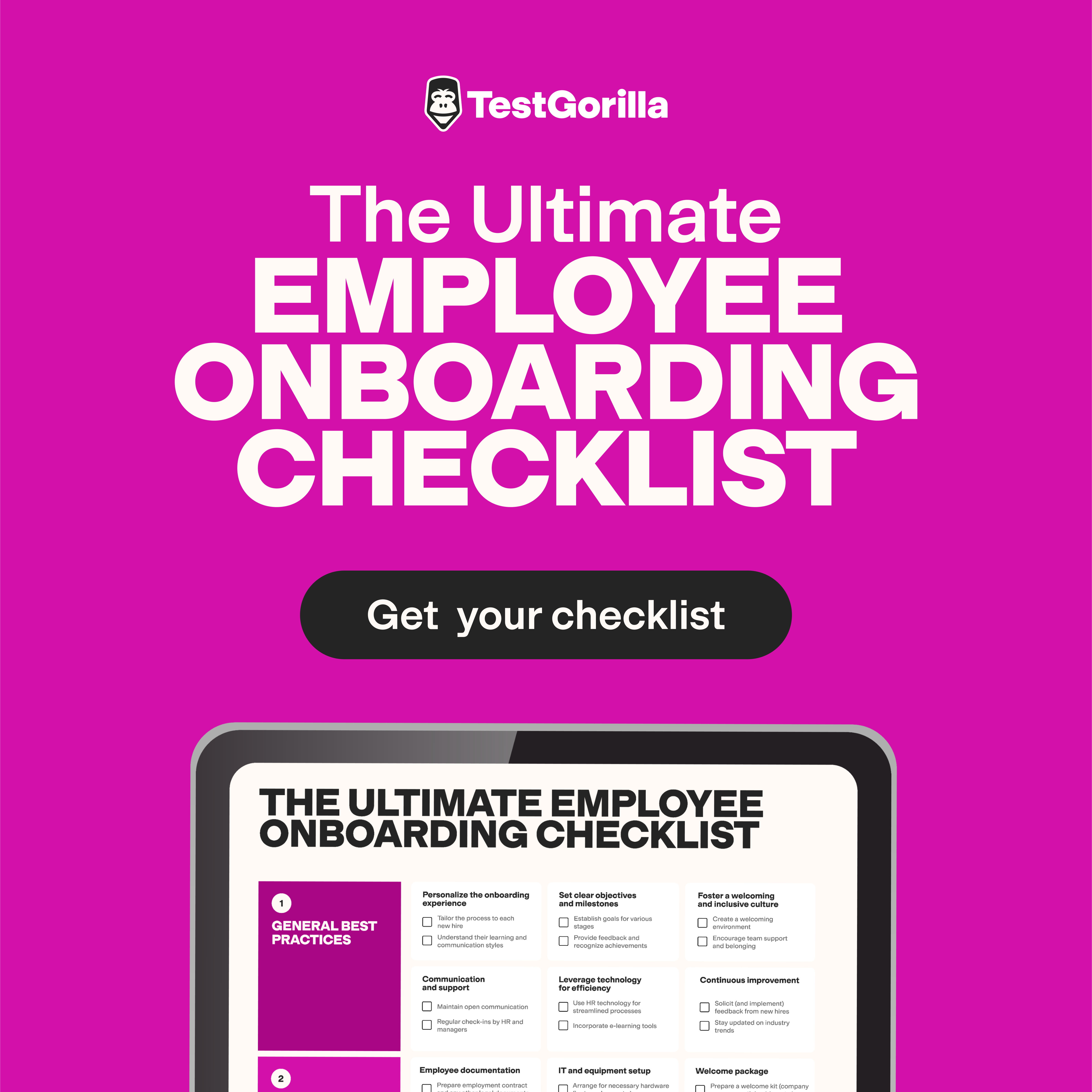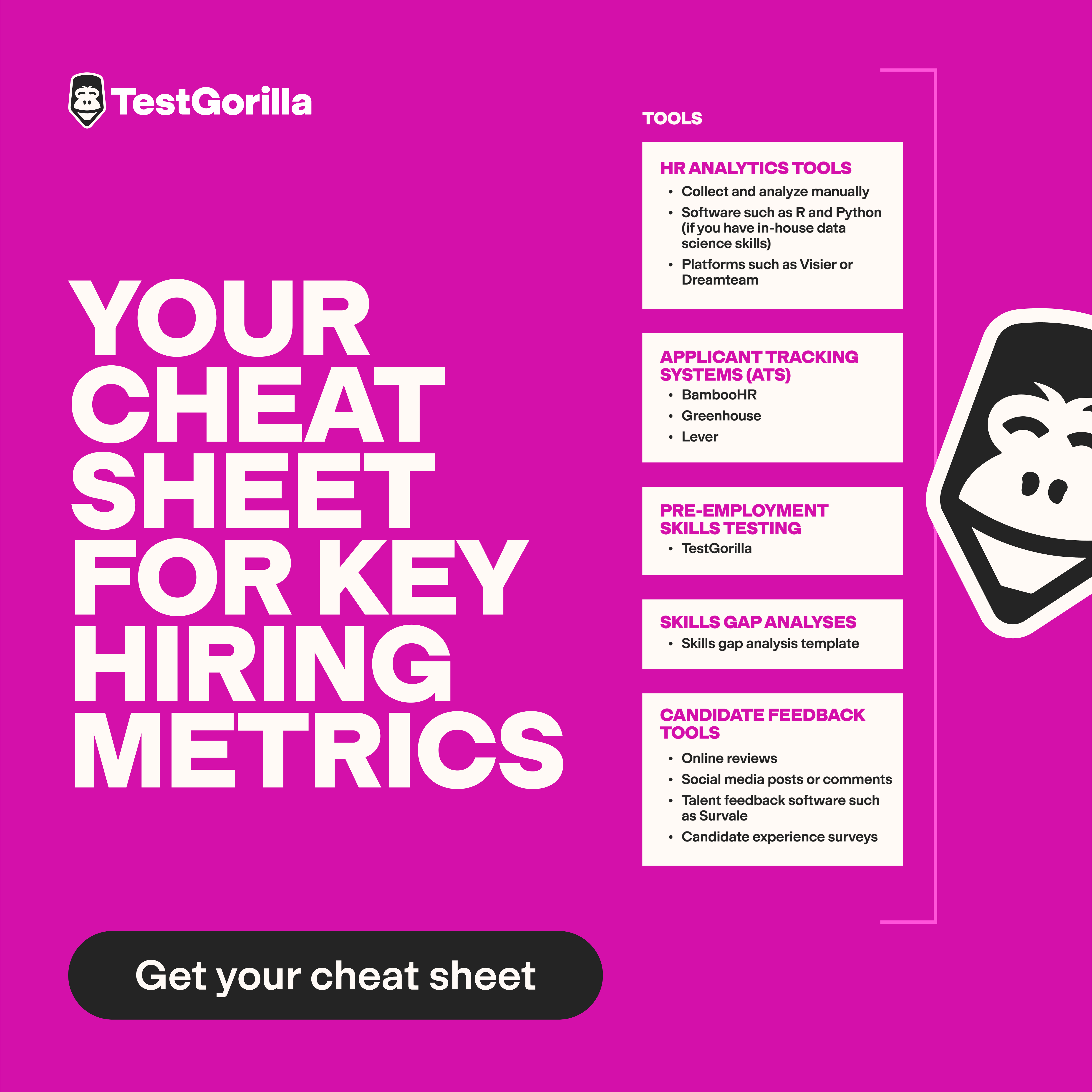Employee turnover costs can have a major impact on your organization’s financial and operational success. Companies that disregard their employee turnover rate can run into several problems, including increased expenses and reduced efficiency.
Understanding the costs of employee turnover and identifying strategies to retain valuable employees can help you grow your business. Additionally, it can provide you with the information needed to improve employee satisfaction, build a positive company culture, and increase profitability.
It’s essential to recognize the importance of employee retention. Understanding retention can help you invest in initiatives that promote employee growth and well-being and mitigate the adverse impact of a high employee turnover rate.
In this article, we’ll explore the concept of employee turnover and different types of turnover. We’ll also give you the process for calculating employee turnover costs and tips to reduce turnover.
Finally, we’ll introduce personality tests like our Big 5 (OCEAN) test, which you can use to reduce your employee turnover rate.
What are employee turnover costs?
Employee turnover costs are the expenses companies incur from employees leaving and having to replace them. Turnover is a significant concern for businesses since it can result in many different turnover costs.
According to research by Zippia, businesses lose an average of 18% of their workforce each year, with 12% being voluntary and 6% being the result of layoffs and terminations.
This can quickly become expensive: A survey by Gallup found that the cost of replacing an employee ranges from one-half to twice their yearly salary.
Therefore, you must take intentional steps to reduce the costs of employee turnover, such as creating a positive work environment and providing opportunities for growth and development. Offering competitive compensation and benefits can also have a significant impact on turnover.
Types of employee turnover costs
Turnover can happen in different ways, and its cost implications can be tangible or intangible. Generally, employee turnover costs fall into two broad categories: direct costs and indirect costs.
Direct costs
Direct costs of employee turnover refer to the expenses incurred by an organization in finding, hiring, and training new employees. These include the following:
Recruitment costs: These costs include advertising for open positions and using recruitment agencies or headhunters. Some businesses may also have to pay to conduct background checks and drug tests.
Onboarding and training costs: These are the costs associated with orienting new employees to the company’s policies and procedures. Employers must provide them with tools, training, and development programs to perform their jobs.
Separation costs: These costs include paying out unused vacation time, severance pay, and the cost of exit interviews.
Want to get more value from your recruitment?
Our complete blueprint will provide the tips, strategies, and insights you need to maximize your recruitment ROI.
Indirect costs
Indirect costs of employee turnover refer to the less quantifiable expenses incurred by a business owing to the departure of its employees. These include:
Reduced employee morale: When employees leave an organization, it can create a sense of instability and uncertainty. As a result, the remaining employees’ morale and productivity can decrease.
Loss of institutional knowledge: When employees leave a business, voluntarily or otherwise, they take their institutional knowledge with them. Finding similar expertise and skills can be a difficult task.
Reduced business performance: A high employee turnover rate can adversely impact an organization’s overall performance. This happens because the constant cycle of hiring and training new employees takes time and effort.
The best insights on HR and recruitment, delivered to your inbox.
Biweekly updates. No spam. Unsubscribe any time.
How to calculate employee turnover costs: 6 steps
Calculating turnover costs can help you better understand how to manage employee turnover and the financial impact it has on your business. Here’s a six-step process for calculating the costs of employee turnover:
1. Define the timeframe and scope of the analysis
First, determine the period for which you will be calculating turnover costs. For example, you could make a quarterly or yearly estimation. Again, decide whether to include all employees or perform the calculation in groups.
2. Determine the cost of separating employees
Next, identify the costs associated with an employee leaving your organization, including severance pay, unused vacation pay, and any other costs related to the employee’s departure.
For example, an employee who leaves your IT department may receive $10,000 in severance pay and $1,000 in vacation pay. You may also incur $500 in other costs associated with their departure.
3. Identify the cost of hiring and onboarding new employees
Establish the costs associated with hiring and onboarding new employees. These include recruitment, training, and development costs and other expenses related to bringing a new employee on board.
Using the same example as above, it may cost your organization $5,000 to recruit and onboard a new employee for your IT department.
4. Calculate lost productivity costs
Calculate the costs associated with lost productivity due to a vacant position. You can also calculate the time and expenses incurred by remaining employees to train and orient new hires.
Using the same scenario as above, your organization could estimate the loss of productivity during the vacancy to cost $2,500. Further, you estimate the cost of having your remaining employees train and orient a new hire to be $3,000.
5. Calculate the total cost of the employee turnover
You can add up the costs identified in the previous steps to determine the total cost of employee turnover. Using the earlier example, the total cost of employee turnover for this particular employee is $22,000.
6. Calculate the general turnover cost
You can use a simple formula to calculate the total turnover cost for your company. In this case, you can multiply the total number of employees by the turnover rate and average departure cost, as shown below:
Total turnover cost = total number of employees × turnover rate × average departure cost
Here, the turnover rate is the number of employees who left divided by the average number of employees. Similarly, you can divide the total expenses by the number of departures to determine the average cost of one separation.
For example, suppose a company has 20 team members in a given year, a turnover rate of 0.125, and an average cost per departure of $1,950. You can multiply these three figures to get the turnover cost of $4,875.
Tips for reducing your employee turnover rate
Employee turnover can have negative consequences for your organization if you don’t manage it properly. Here are some quick tips to reduce your employee turnover rate:
Offer competitive compensation, benefits, and flexible work schedules.
Create a positive company culture and environment that promotes teamwork, communication, and recognition. A company with 10,000 employees can save $16.1m in annual turnover costs just by building a culture of recognition, according to a study by Gallup and Workhuman.
Provide opportunities for growth and development.
Provide mentorship programs and opportunities for employees to explore new challenges.
Improve manager-employee relationships.
Foster a good foundation for trust and mutual respect between everyone.
Offer employee support services and other welfare programs.
Use personality tests to minimize employee turnover
Identifying the causes of high turnover rates is crucial to developing effective strategies to reduce them. One vital tool to include in your process is personality tests. These tests evaluate candidates’ natures and traits.
The test results can help you improve the quality of your hires and increase employee retention.
Skills testing also helps you identify candidates whose personalities fit the role, reducing the risk of turnover. As such, it’s a valuable tool for companies seeking success.
You can explore tests like this in our test library to assess new hires and current employees alike. For example, you can use our 16 personalities test based on Jung's work to understand test takers’ preferences, sources of energy, and approaches to decision-making.
Register for free today to enjoy lower turnover and the many other benefits our assessments provide.
You've scrolled this far
Why not try TestGorilla for free, and see what happens when you put skills first.



